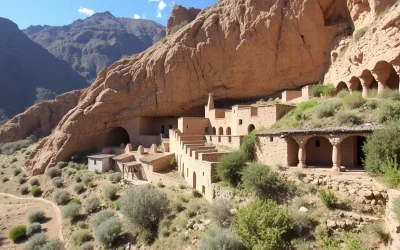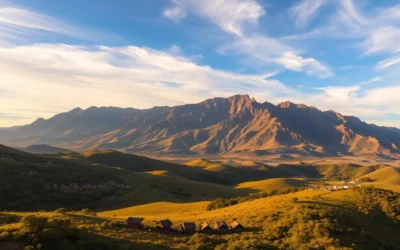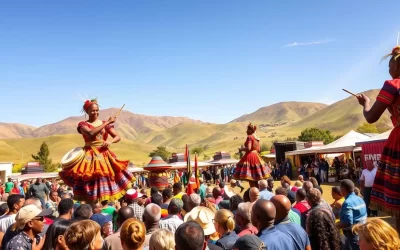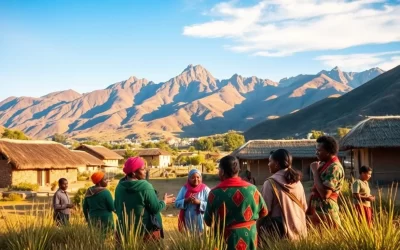✓ Accommodations ✓ Flights ✓ Rental Cars ✓ Tours & Activities
You’re planning a trip to Lesotho, a stunning mountainous country completely surrounded by South Africa. Timing is everything for this adventure, as Lesotho’s high elevation creates unique weather conditions.
Understanding the best time to visit is essential for making the most of your journey. Lesotho’s climate differs dramatically from its neighboring country, with summer running from October to April and winter from May to September.
This comprehensive travel guide will help you discover the optimal time to visit based on your preferred activities, whether it’s hiking, skiing, or wildlife viewing. With this information, you’ll be able to pack appropriately and enjoy your trip to this remarkable mountain kingdom.
Understanding Lesotho’s Unique Climate
With its nickname ‘The Kingdom in the Sky,’ Lesotho’s climate is characterized by dramatic temperature variations. This variation is not just a matter of weather forecasting; it’s a defining feature of the country’s diverse ecosystems.
The country’s geography plays a crucial role in shaping its climate. Lesotho is known for its high altitude, which significantly influences the weather patterns across different regions.
The Kingdom in the Sky: Geographical Context
Lesotho’s high average elevation contributes to its unique climatic conditions. The country’s terrain ranges from valley floors to high mountain peaks, creating a variety of microclimates.
How Altitude Affects Weather Patterns
The time of day and night also plays a significant role in Lesotho’s climate. Temperatures can soar during the day, only to drop significantly at night. For instance, traversing the Sani Pass from Underberg in South Africa is a great way to experience this rapid change, with valley floors basking in mid-thirties Celsius temperatures and high peaks being particularly chill.
- You’ll experience dramatic temperature variations in Lesotho, where the altitude creates distinct microclimates throughout the country.
- During your visit, you might encounter temperature differences of 20°C between valley floors and mountain peaks on the same day.
- The contrast between daytime and nighttime temperatures is particularly striking, with warm days often followed by significantly cooler nights.
- You should prepare for these altitude-influenced weather patterns by packing layers regardless of when you travel to Lesotho.
- The climate variations create unique ecosystems at different elevations, contributing to Lesotho’s diverse natural beauty that changes with each altitude zone.
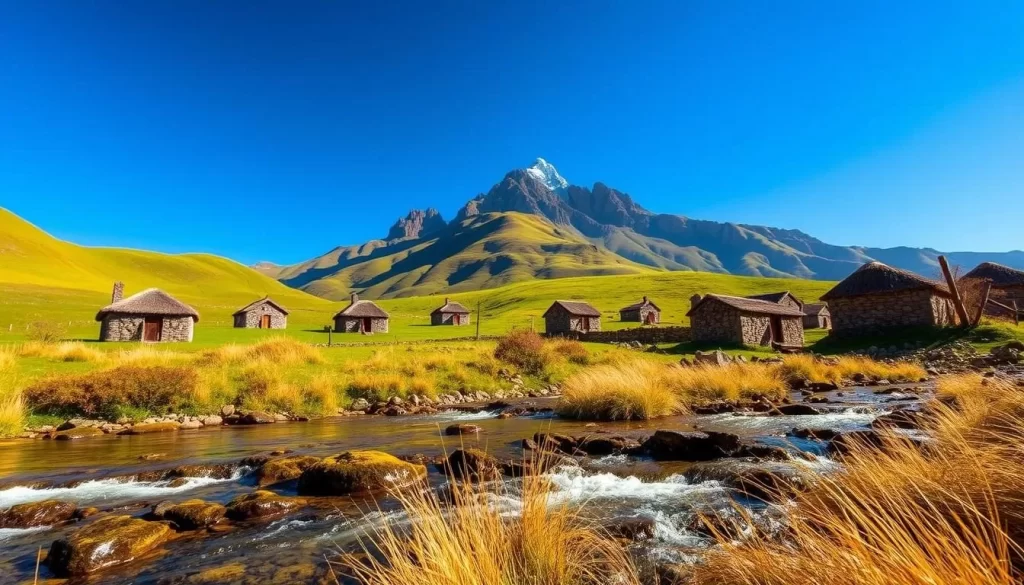
Summer in Lesotho: October to April
Summer in Lesotho, spanning from October to April, offers a unique blend of weather conditions ideal for various activities. This period is characterized by warm temperatures and occasional rain showers, making it a great time to enjoy the outdoors.
Peak Summer Months: January and February
January and February are the peak summer months in Lesotho, with warm weather prevailing across the country. It’s an excellent time for outdoor enthusiasts to engage in activities like hiking and exploring the natural beauty of Lesotho.
Early and Late Summer: Ideal for Hiking
Early summer (October to December) and late summer (March to April) are particularly ideal for hiking and trekking. The weather is generally mild, and the landscapes are lush, making it a perfect time to visit places like the Sani Pass. 
Safari Season: March and April
March and April are considered the best months for a safari in Lesotho. The late summer months offer prime wildlife viewing opportunities as the landscape is verdant after the summer rains. You can visit national parks like Sehlabathebe and Ts’ehlanyane, enjoying the pleasant temperatures and diminishing rainfall.
| Month | Weather | Activities |
|---|---|---|
| January | Warm | Hiking, Outdoor Activities |
| February | Warm | Hiking, Outdoor Activities |
| March | Mild, Verdant Landscapes | Safari, Wildlife Viewing |
| April | Mild, Verdant Landscapes | Safari, Wildlife Viewing |
Winter in Lesotho: May to September
When you visit Lesotho between May and September, you’re in for a winter adventure like no other. The country’s high altitude means that winter brings cold temperatures and occasional snow, transforming the landscape into a winter wonderland.
Preparing for Snow and Cold Temperatures
To make the most of your trip, it’s essential to prepare for the cold. Pack warm clothing, including thermal layers and a good quality coat, as temperatures can drop significantly, especially in the mornings and evenings. If you plan to explore the highlands, ensure your vehicle is suitable for winter conditions, with a 4×4 being highly recommended for navigating mountain roads like the Sani Pass.
Skiing Season: July to September
For skiing enthusiasts, Lesotho offers a unique opportunity to hit the slopes from July to September. The Afriski Ski Resort is a must-visit, providing some of the best skiing experiences in Southern Africa. Make sure to check the snow conditions before heading out, as they can vary from year to year.
Winter Travel Challenges and Safety Tips
Traveling through Lesotho’s highlands in winter can be challenging due to sudden snowstorms and icy roads. Always check the weather forecast and road conditions before setting out. It’s also crucial to carry an emergency kit with essentials like food, water, and a means of communication. Despite these challenges, many find the experience rewarding, with the right preparation ensuring a safe and enjoyable journey.
| Month | Average Temperature | Activities |
|---|---|---|
| May | Cool | Hiking, sightseeing |
| July | Cold | Skiing, snowboarding |
| September | Mild | Skiing, exploring |
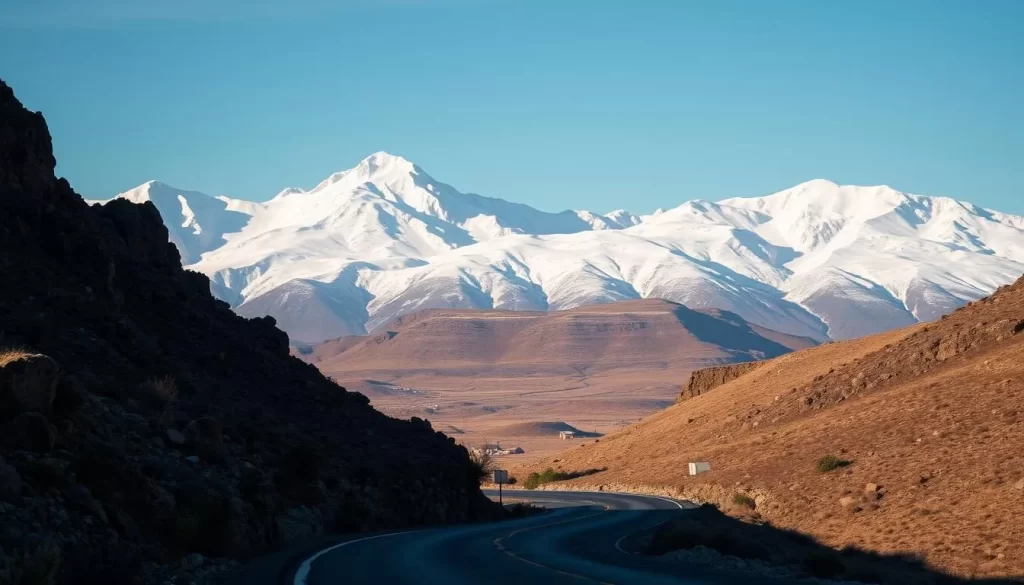
Lesotho: Best Months for a Weather-Savvy Trip
With a clearer understanding of Lesotho’s weather patterns, you can now make informed decisions about your visit. The best time to visit Lesotho for most travelers is during March and April, when the temperatures are pleasant, rainfall is reduced, and landscapes are lush.
If you’re planning to hit the slopes, July to September is ideal for skiing. Lesotho’s summer months (October to April) offer warm weather but may include afternoon thunderstorms. In contrast, winter months (May to September) bring snow and unique skiing opportunities, requiring careful preparation.
Regardless of when you travel to Lesotho, packing layers is essential due to the dramatic day-night temperature variations. This guide helps you plan a weather-savvy trip that aligns with your interests, ensuring you experience the best of this remarkable mountain kingdom.
The above is subject to change.
Check back often to TRAVEL.COM for the latest travel tips and deals.

